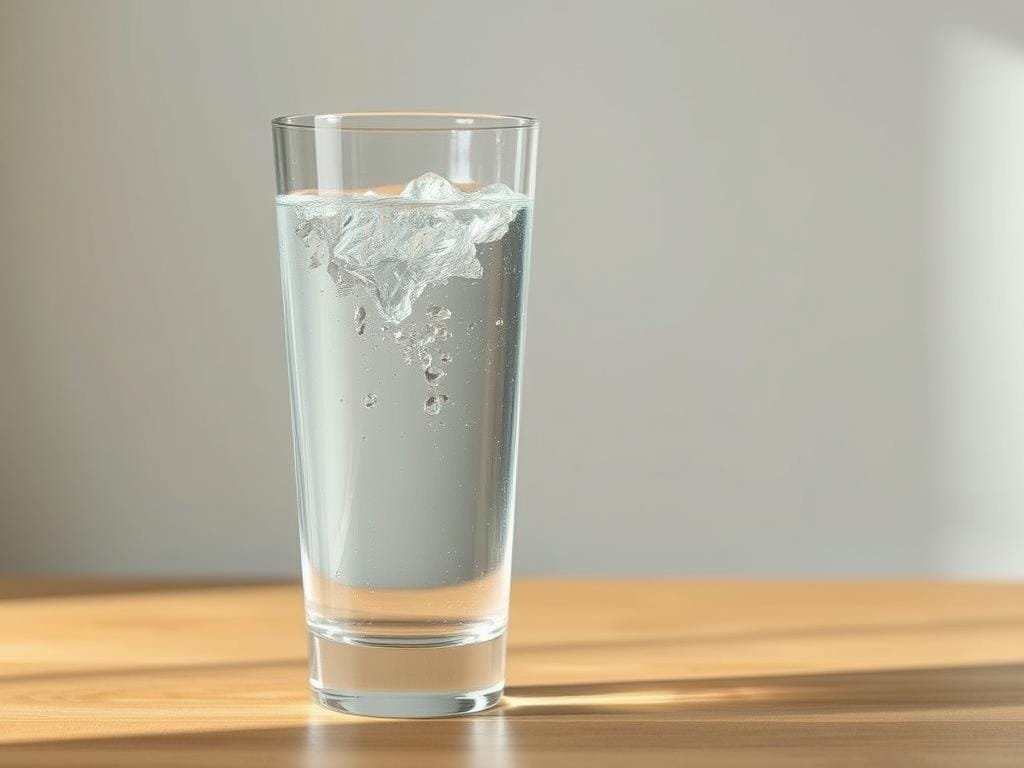The 30/30/30 rule has become a big hit in the weight loss world. Millions of people on TikTok are sharing their success with it. So, what is this rule, and how does it help with fat loss?
This rule means eating 30 grams of protein right after waking up. Then, you do 30 minutes of low-intensity exercise. It’s simple yet effective for weight loss.
Starting your day with protein and gentle exercise can boost your metabolism. As you learn more about this rule, you’ll see how it can change your life. It’s a simple way to a healthier lifestyle.
Table of Contents
Understanding the 30/30/30 Rule for Fat Loss
The 30/30/30 rule is a simple way to lose weight. It combines diet and exercise for fat loss and better health.
What Does the 30/30/30 Rule Entail?
The rule has three parts. Eat 30 grams of protein within 30 minutes of waking. Then, do 30 minutes of light exercise. This starts your metabolism, controls hunger, and boosts energy.
Here’s a breakdown of the rule:
| Component | Description | Benefit |
|---|---|---|
| 30 grams of Protein | Consumed within 30 minutes of waking | Boosts metabolism, controls hunger |
| 30 minutes of Exercise | Low-intensity physical activity | Enhances energy, supports weight loss |
The Rationale Behind This Approach
The 30/30/30 rule is based on weight loss science. Eating a lot of protein in the morning boosts your metabolism. It also helps you avoid eating too much later.
Then, the light exercise increases your metabolic rate. This helps you burn more calories, which is key for losing weight.
Who Can Benefit from the 30/30/30 Rule?
This rule is great for those wanting a simple weight loss plan. It’s perfect for people who find complex diets or hard workouts too hard. The 30/30/30 rule makes losing weight easier and more accessible.
The Science of Fat Loss: An Overview
To lose fat, you need to understand the science behind it. Fat loss happens when you burn more calories than you eat, creating an energy deficit. Knowing how calories, macronutrients, and energy deficit work together is key to reaching your weight loss goals.

How Calories Affect Fat Loss
Calories are the energy your body uses. Eating more calories than you burn leads to fat storage. On the other hand, burning more calories than you eat means your body uses fat for energy, leading to weight loss. Creating a calorie deficit is a fundamental step in losing fat.
The Importance of Macronutrients
Macronutrients like protein, carbohydrates, and fats are important for fat loss. Protein helps build and repair muscles, which is important for metabolism. Carbohydrates give you energy for workouts and daily life, while fats support hormone production and health. A balanced intake of these macronutrients is necessary for optimal fat loss.
Energy Deficit Explained
An energy deficit happens when you burn more calories than you eat. This can be done by eating fewer calories and being more active. A sustainable energy deficit is key to losing fat without compromising your health or muscle mass. It’s not just about cutting calories drastically but making sustainable lifestyle changes that you can maintain in the long term.
Breakdown of the 30/30/30 Rule Components
To reach your weight loss goals, it’s key to know the 30/30/30 rule. This rule suggests dividing your daily calories into 30% protein, 30% carbs, and 30% fats. The remaining 10% can be any macronutrient you prefer.
30% Protein: Essential for Fat Loss
Protein is vital for weight loss and health. It helps build and repair muscles, organs, and tissues. Eating enough protein can make you feel full, helping you eat fewer calories.
For those on a fitness journey, protein is critical. It helps muscles recover after exercise.
Good protein sources include lean meats, fish, eggs, dairy, and plant-based options like beans and tofu.
30% Carbohydrates: Fuel for Your Workouts
Carbohydrates are the body’s main energy source, important for intense activities. They fuel your workouts and help with recovery. Whole grains, fruits, and vegetables are great carb sources.
For those trying to burn fat and get in shape, complex carbs like whole grains offer sustained energy and fiber.
30% Fats: The Unsung Hero
Fats are often misunderstood but are key for hormone production, brain function, and vitamin absorption. Healthy fats in nuts, seeds, avocados, and olive oil are vital for a balanced diet.
Adding healthy fats to your diet can make you feel full longer, aiding in weight loss.
| Macronutrient | Percentage of Daily Calories | Example Foods |
|---|---|---|
| Protein | 30% | Chicken breast, fish, eggs, tofu |
| Carbohydrates | 30% | Rice, whole wheat bread, fruits, vegetables |
| Fats | 30% | Nuts, seeds, avocados, olive oil |
| Flexible | 10% | Can be any macronutrient based on personal preference |
For more details on the 30/30/30 rule, check out UCLA Health’s article on the subject.
Implementing the 30/30/30 Rule in Your Diet
The 30/30/30 rule works best when you plan your meals, control portions, and choose the right foods. These steps help you manage your macronutrients for weight loss and better health.
Meal Planning Tips for Success
Good meal planning starts with knowing your daily calorie needs. Then, you can follow the 30/30/30 rule. Here are some tips to help:
- Focus on whole foods like veggies, lean proteins, and grains.
- Use apps or calendars for meal and grocery planning.
- Prepare meals ahead to save time.
- Batch cook and freeze meals for later.
Portion Control and Strategies
It’s key to control your portions for the 30/30/30 rule. Here are some tips:
- Use a food scale for accurate portions.
- Learn standard serving sizes for different foods.
- Eat slowly until you’re satisfied, not full.
- Avoid eating in front of screens or while distracted.
| Food Group | Recommended Serving Size | Examples |
|---|---|---|
| Protein | 3-4 ounces | Chicken breast, fish, tofu |
| Carbohydrates | 1/2 cup cooked | Brown rice, quinoa, whole wheat bread |
| Fats | 1 tablespoon | Olive oil, nuts, seeds |
Food Choices to Optimize Your Intake
Choosing the right foods is key for good macronutrient intake. Stick to whole, unprocessed foods. Here are some tips:
- Pick lean proteins like poultry, fish, and legumes.
- Go for complex carbs like whole grains, fruits, and veggies.
- Add healthy fats like avocado, nuts, and olive oil to your diet.
- Limit processed and high-sugar foods.
By following these tips, the 30/30/30 rule can be a lasting part of your healthy lifestyle. It supports your weight loss and health goals.
The Role of Physical Activity in Fat Loss
Physical activity is key to losing fat. It burns calories and builds muscle. This boosts your metabolism and health.

Types of Exercise to Complement the Rule
A good fitness plan includes different exercises. Low-intensity exercises like walking or yoga help with recovery and keep you flexible. High-intensity activities such as running or HIIT are great for burning calories.
High-Intensity Interval Training (HIIT)
HIIT is short, intense workouts followed by rest. It’s great for losing fat because it raises your metabolism and burns calories fast. Fitness experts say, “HIIT is a game-changer for those looking to maximize their fat loss in minimal time.”
“The beauty of HIIT lies in its efficiency and effectiveness, making it a favorite among fitness enthusiasts.
Strength Training: Building Muscle and Burning Fat
Strength training is vital for fat loss. It builds muscle, which increases your resting metabolic rate. This means your body burns more calories even when you’re not working out. It also improves your body’s overall shape.
- Improves muscle mass
- Enhances metabolism
- Supports bone health
Adding these exercises to your routine can greatly help with fat loss. Remember, being consistent and patient is important. As you keep going, you’ll see changes in your body and feel better overall.
Tracking Your Progress: Tools and Methods
Effective weight loss is more than just dieting. It’s about tracking your progress. This helps you see what works and what doesn’t in your weight loss plan.
Benefits of Keeping a Food Journal
Keeping a food journal is a top way to track your eating. By writing down what you eat, you spot patterns like overeating. This is the first step to making better choices.
A food journal also keeps you accountable. Writing down meals makes you think twice about unhealthy choices. It also gives insights into your eating habits, helping you make better diet choices.

How to Use Apps for Monitoring Intake
Today, many apps help track your food intake. These apps let you log meals, count calories, and track nutrients. MyFitnessPal and Lose It! are popular choices.
Apps make tracking your diet easy. They have huge food databases and provide detailed reports. These reports help you see where you can improve.
| App Name | Features | User Rating |
|---|---|---|
| MyFitnessPal | Large food database, calorie tracking, macro monitoring | 4.8/5 |
| Lose It! | Simple logging, macro tracking, community support | 4.7/5 |
Setting Realistic Goals
Setting realistic goals is key for weight loss success. Unrealistic goals lead to disappointment. Aim for losing 1-2 pounds a week.
To set realistic goals, think about your current weight, activity, and diet. Break down big goals into smaller steps. Celebrate your wins to stay motivated.
Combining a food journal or app with realistic goals makes a strong weight loss plan. Tracking your progress and sticking to your goals leads to lasting weight loss.
Common Mistakes to Avoid with the 30/30/30 Rule
It’s important to avoid common mistakes when using the 30/30/30 rule for fat loss. This rule can help, but mistakes can slow you down.
Overlooking Portion Sizes
One big mistake is not paying attention to portion sizes. Even with the right mix of nutrients, eating too much can stop fat loss. Use a food scale or measuring cups to get your portions right.
A study in the Journal of the Academy of Nutrition and Dietetics showed that measuring food helps with weight loss. It’s key to be exact with your measurements.
| Food Item | Recommended Portion | Common Mistake |
|---|---|---|
| Chicken Breast | 3 oz (85g) | Eating 6 oz (170g) or more |
| Brown Rice | 1/2 cup cooked | Consuming 1 cup or more |
Misunderstanding Macronutrients
Another mistake is not understanding macronutrients. It’s not just about hitting the 30% mark. Choosing the right types of protein, carbs, and fats is key.
“The quality of your macronutrients can significantly impact your fat loss journey. Focus on whole foods instead of processed ones.”
Make sure you know about the different macronutrients and how they affect your body.
Neglecting Hydration
Not drinking enough water is another mistake. Water is vital for burning fat. Drink at least 8 cups (64 oz) a day, more if you’re active.

Drinking water also helps control hunger and boosts your metabolism. It supports your fat loss goals.
Staying Motivated on Your Fat Loss Journey
To lose fat for good, you need to stay motivated. This means using strategies that keep you going, even when it’s tough.
Support Systems and Community Involvement
A strong support system boosts your motivation. This can be family, friends, or online groups who get your weight loss goals.
Being part of a community with similar goals adds motivation. You can share your journey, learn from others, and stay on track.
Setting Milestones and Celebrating Success
Setting realistic goals is key to staying motivated. Break down big goals into smaller, doable steps. This way, you can celebrate your wins.
Celebrating your milestones lifts your spirits. It also shows you’re serious about your weight loss journey.
Overcoming Plateaus
Plateaus are a common hurdle. To get past them, you need to rethink your approach.
Try new workouts, tweak your diet, or get expert advice. These changes can help you move forward.
| Strategy | Description | Benefit |
|---|---|---|
| Support Systems | Engage with family, friends, or online communities | Enhanced motivation and accountability |
| Milestone Setting | Break down goals into smaller targets | Regular celebrations of success |
| Plateau Management | Reassess and adjust your strategy | Break through plateaus effectively |
How to Adjust the 30/30/30 Rule for Your Needs
The 30/30/30 rule isn’t for everyone. It’s important to make it fit your own needs for fat loss. Your goals, how active you are, and what you eat can change how well it works.
Customizing Macros for Different Goals
Changing your macronutrient ratios might be needed based on your goals. For example, if you want to build muscle and lose fat, you might eat more protein. If you’re into endurance sports, you might need to adjust your carb intake. Knowing how each macronutrient affects you is key.
For tips on tweaking your macronutrient ratios, check out Today.com. They offer insights on different diets, including the 30/30/30 rule.
Considering Activity Levels
Your activity level is important for finding the right macronutrient balance. If you’re very active, you might need more carbs for energy and recovery. If you’re less active, you might need to eat fewer calories to lose fat. Adjusting your diet based on your activity level is essential.
Incorporating Dietary Preferences
Your dietary preferences should also guide your adjustments to the 30/30/30 rule. For instance, if you’re vegetarian or vegan, you’ll need to focus on getting enough protein from plants. If you follow a specific diet like gluten-free or keto, you’ll need to adjust your ratios to fit those needs.
By considering these factors and making the right changes, you can make the 30/30/30 rule work better for you. This will help you on your fat loss journey.
Success Stories: Real People, Real Results
Many people have seen amazing results with the 30/30/30 rule. Their stories are truly inspiring. By following this balanced nutrition approach, they’ve lost weight and improved their health.
Transformation Testimonials
Many have shared how the 30/30/30 rule changed their lives. For example, Emily R. lost 25 pounds in three months. She followed the rule and added regular exercise to her routine.
- Improved energy levels due to balanced macronutrient intake.
- Significant weight loss achieved through sustainable dietary changes.
- Better overall health and well-being.
Challenges Faced and Overcome
The 30/30/30 rule works for many, but it’s not easy for everyone. Some struggle to keep the right balance or adjust to new eating habits. But, with determination and the right help, these hurdles can be cleared.
- Planning meals in advance to ensure the right balance of proteins, carbohydrates, and fats.
- Seeking support from like-minded individuals or professionals.
- Monitoring progress and making adjustments as needed.
Lessons Learned Along the Way
Success in weight loss and health is more than just a rule. It’s about adopting a lifestyle that supports well-being. Those who’ve succeeded with the 30/30/30 rule learned important lessons about nutrition, patience, and consistency.
We share these success stories to inspire others to start their own journey to a healthier, happier life.
Conclusion: Embracing the 30/30/30 Rule for Lasting Change
Adopting the 30/30/30 rule can change your life for the better. It’s a smart way to lose fat and get healthier. Remember the key points that make this rule work.
Recap of Key Takeaways
The 30/30/30 rule focuses on the right mix of nutrients. You should get 30% of your calories from protein, 30% from carbs, and 30% from fats. This mix is key to lasting changes in your body.
| Macronutrient | Percentage | Benefits |
|---|---|---|
| Protein | 30% | Essential for muscle repair and growth |
| Carbohydrates | 30% | Provides energy for workouts and daily activities |
| Fats | 30% | Supports hormone production and overall health |
Moving Forward with Confidence
To see lasting results, stick to your diet and exercise regularly. This will help you reach your fat loss goals and boost your health.
Final Words of Encouragement
Starting a fat loss journey is tough, but the 30/30/30 rule gives you a solid plan. Success comes from being consistent and patient. Stay true to your goals, and you’ll see lasting changes.
Remember, the 30/30/30 rule is more than just losing fat. It’s about living a healthier life. Keep your motivation high and stay focused on your goals.
Additional Resources for Fat Loss Success
As you keep working on losing weight, the right tools can really help. Look into books and websites that share useful tips and advice. They can give you the extra push you need.
Reliable Sources for Weight Loss Information
Check out the Academy of Nutrition and Dietetics online. They have trustworthy info on nutrition and losing weight. Also, books by experts in nutrition can offer valuable guidance.
Seeking Professional Help
Having trouble losing weight? Talk to a doctor or a dietitian. They can make a plan just for you.
Online Communities for Support
Join online groups or social media for weight loss support. You’ll find people with the same goals as you. It’s a great way to stay motivated.
